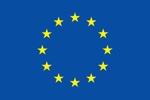QEPAS and PTS using low cost telecoms wavelength lasers for food analysis
This project will implement the techniques to carry out high sensitivity PTS and QEPAS using telecoms wavelength equipment to provide low cost real-world sensing problems. In this regard, one must aim for a match between metrological quality (accuracy, sensitivity, linear range, etc.) and practical aspects such as cost, speed and overall ruggedness. This ESR project shall investigate the possibility of using very cost effective telecoms laser technology that operate around 1.3 μm – 1.6 μm for use in PTS sensing applications. In this spectral range only weak overtones are present, instead of strong fundamental absorption lines found in the mid-IR range, therefore a significant reduced sensitivity (ppm instead of ppb) is expected. Further anticipated difficulties are overlapping spectral features of analyte and matrix molecules due to a more crowded spectrum and a stronger temperature dependence concerning the population of molecular energy levels forming part of the respective transitions in this NIR spectral range. A new monitoring microcavity will be developed for the PTS. Curved mirrors and/or polymer micro lenses will be implemented to realised a Fabry-Perot cavity with higher finesse than the planar cavities currently in use. Using the adapted PTS sensor allowing also for temperature dependent measurements these difficulties will be investigated and solutions based on multivariate data analysis strategies such as PLS, PCA and curve fitting algorithm developed. Overtone absorption lines are much weaker than that of the fundamental transitions and the number of lines are greater and more densely spaced, which creates challenges both in the hardware required to make the measurement, and in the software used to analyse the data. In this project, ESR2.2 will begin by using off-the-shelf telecoms lasers with QEPAS and/or PTS systems and also implement the monitoring techniques used by ESR2.3 and ultimately migrate to the new hybrid lasers developed by ESRs 2.1, 3.2 and 1.3. As target analytes small molecules such as NH3 (λ=1.514 μm) which are of relevance in detecting food quality as well as in environmental applications will be selected for this study. The OPTAPHI developments promise ppb sensitivities and better for the fundamental absorption band and will provide low ppm for the overtone bands. Chemometrics and Artificial Intelligence will be used to analyse the data generated. Multivariate models will be produced based on the multi-wavelength spectral response of the analyte concentration, with the models calibrated against reference methods.
Expected Results
- PTS measurement directly at telecoms wavelength
- Protocol for analysis of resulting spectra
- Detection of ammonia at ppm levels using PTS
Timeline
* N.B. Secondments and timings shown are indicative only, and may be subject to change.

 Giulia Malvicini
Giulia Malvicini Munster Technological University
Munster Technological University Technische Universität Wien
Technische Universität Wien





